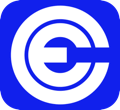Overview: Signal and GitLab as Security Category solutions.
Signal and GitLab are both top-tier products in the security category, excelling in different areas based on user needs. Signal emphasizes communication and privacy, proving valuable in sectors like Marketing and Non-Profit Organizations. GitLab shines with its extensive collaboration capabilities, making it preferred in IT and Software development sectors. Each serves different business objectives, with Signal aiming to enhance customer relationships and internal communications while GitLab focuses on improving efficiency and scaling best practices.
Signal: Signal, a free and peer-reviewed encryption tool, is highly scalable. Laura Poitras, an Oscar-winning filmmaker, encourages its daily use.
GitLab: GitLab is an AI-powered DevSecOps platform uniting teams in one application. It helps ship secure code efficiently, accelerating value delivery.
Signal and GitLab: Best Use cases based on the customer satisfaction data
Key Capabilities Supported
Signal supports communication management and sending communications, aligning with needs for enhanced internal and external communication. read more →
GitLab enables collaboration and workflow management, offering tools that support efficient team collaboration in tech environments. read more →
Business Goals
Signal aims to launch new products and improve digital presence, which helps in reaching wider audiences. read more →
GitLab focuses on scaling best practices and improving efficiency, assisting tech companies in streamlining their operations. read more →
Core Features
Signal offers standout features like security, privacy, and compliance to protect communications and ensure secure data handling. read more →
GitLab provides robust integration and analytics features, enhancing its appeal for complex project management and technical workflows. read more →
Vendor Support
Signal offers 24/7 support through primary channels like phone and chat, catering to urgent communication needs. read more →
GitLab provides comprehensive support with additional training and onboarding, accommodating the complex setups in IT environments. read more →
Segments and Industries
Signal is predominantly used by large enterprises and sectors like Marketing and Non-Profit, highlighting its strength in communication-based activities. read more →
GitLab attracts large enterprise customers in computer software and IT services, fitting those with extensive collaboration needs. read more →
Operational Alignment
Signal fits well into organizational workflows aimed at improving customer communication and marketing efforts. read more →
GitLab integrates into tech and IT workflows, designed for managing large-scale projects and collaborations. read more →
Failure Risk Guidance?
Compliance Risk
{{{rsh_C_1}}}
{{{rsh_C_1}}}
Security & Privacy Risk
{{{rsh_C_1}}}
{{{rsh_C_1}}}
Integration Risk
{{{rsh_C_1}}}
{{{rsh_C_1}}}
Migration Risk
{{{rsh_C_1}}}
{{{rsh_C_1}}}
IT and Other Capabilities
- Low
- Medium
- High
Data
Support
Others
Signal in Action: Unique Use Cases
What Are the key features of Signal for Advertisement?
How can Signal enhance your Contact List Management process?
GitLab in Action: Unique Use Cases
How does GitLab facilitate Collaboration?
How can GitLab enhance your Workflow Management process?
What Are the key features of GitLab for Training & Onboarding?
What benefits does GitLab offer for Communication Management?
What makes GitLab ideal for Sales Document Management?
Alternatives
News
Latest Signal News
Signal is now the best free video call alternative to Zoom, Meet, and Teams - Coywolf News
Signal is considered the best free video calling option compared to Zoom, Meet, and Teams.
Latest GitLab News
GitLab (NASDAQ:GTLB) Beats Q2 Sales Expectations But Stock Drops 10.3%
GitLab reported Q2 CY2025 revenue of $236 million, a 29.2% year-on-year increase, surpassing Wall Street expectations by 4%. The company also achieved a non-GAAP profit of $0.24 per share, a 46.3% beat over estimates. Despite these results, GitLab's stock dropped 10.3% due to slightly lower-than-expected next-quarter revenue guidance. The company maintains strong customer retention with a net revenue retention rate of 121%.















